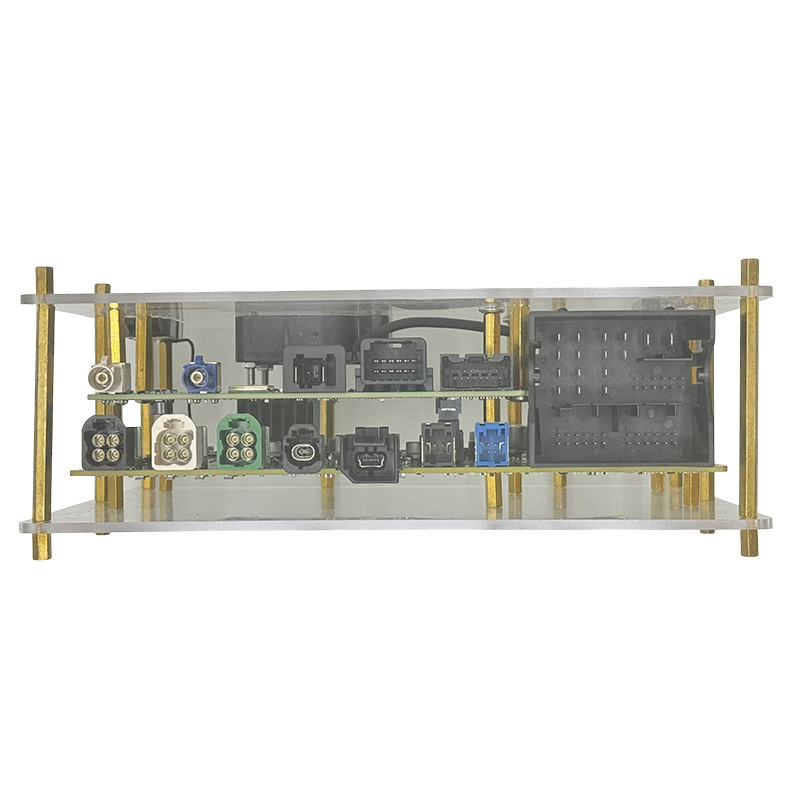IVI Host Interface Overall Solution
Through this interface, the vehicle can perform self-detection, and external equipment (such as diagnostic tools) can read vehicle status information, detect fault codes, and perform repairs and maintenance through this interface.
1. CAN bus interface (Controller Area Network)
Function: Communication protocol between control modules in the vehicle, used to transmit data and control instructions.
Purpose: Connect the host with other electronic control units (ECUs) of the vehicle, such as engine control, braking system, air conditioning, lighting, etc., to achieve high-speed exchange and control of data inside the vehicle.
2. Ethernet interface (Automotive Ethernet)
Function: Used for high-speed data transmission, especially suitable for high-bandwidth applications.
Purpose: Connect the host with high-definition cameras, radars, automatic driving modules and ADAS systems for high-speed transmission of high-definition video and sensor data.
3. MOST interface (Media Oriented Systems Transport)
Function: Used for data transmission of multimedia systems.
Purpose: Connect audio and video devices, such as high-end car audio systems and rear entertainment systems, to achieve lossless high-speed transmission of multimedia data.
4. RCA interface (audio and video interface)
Function: Transmit analog audio and video signals.
Purpose: Used to connect reversing cameras or external video devices, provide video input and audio output functions, and are usually used in rear-view imaging systems.
5. Power interface
Function: Power the host and its connected peripherals.
Purpose: Provide 12V power for the vehicle to support the normal operation of the host and provide power for various devices connected to the host (such as sensors, cameras, etc.).
6. Fiber optic interface (fiber optic transmission)
Function: Used to transmit high-bandwidth audio and video signals to avoid electromagnetic interference.
Purpose: Mainly used for audio and video transmission between advanced audio systems and entertainment systems to ensure high fidelity and stability of signals.
7. GPS antenna interface
Function: Access GPS signals.
Purpose: Connect the vehicle-mounted GPS antenna to achieve navigation and positioning functions.
8. Radio frequency (RF) antenna interface
Function: Access vehicle-mounted wireless signals such as broadcasting, cellular networks, etc.
Purpose: Connect the vehicle-mounted FM/AM broadcast antenna, or cellular network module (for 4G/5G connection) to provide wireless communication services.
9. Reversing camera interface
Function: Video signal input.
Purpose: Connect the reversing camera and transmit the image collected by the camera to the vehicle display screen to realize the reversing image function.
10. Speaker output interface
Function: For audio output, connect the vehicle speaker system.
Purpose: Connect the in-vehicle audio system through the back-end interface to realize the audio output of the vehicle entertainment system.
11. Microphone interface
Function: Audio input.
Purpose: Connect the vehicle microphone for voice control or call function.
12. SIM card slot
Function: Support 4G/5G network connection.
Purpose: Used for networking functions, support vehicle networking services, such as vehicle Wi-Fi, remote control, vehicle information update, etc.
13. Diagnostic interface (OBD-II interface)
Function: Used for vehicle fault detection and diagnosis.

